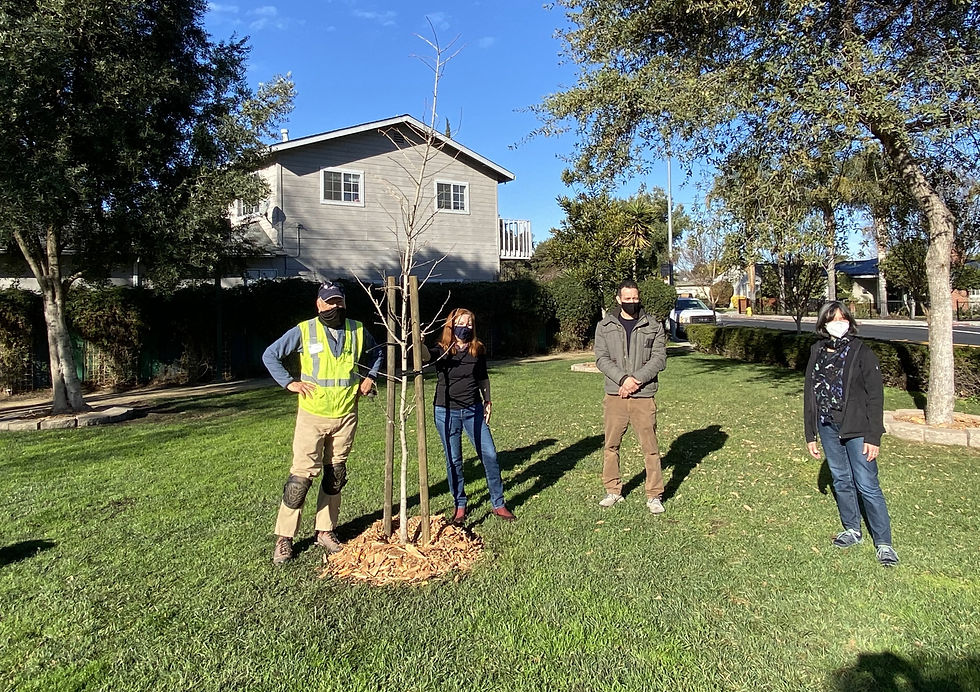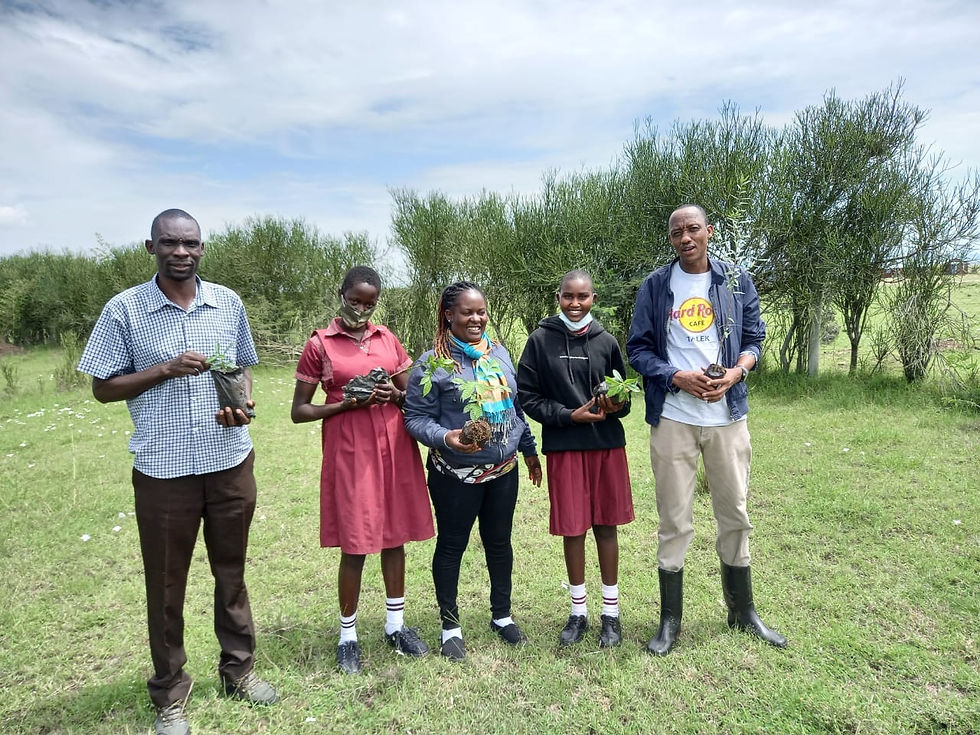Planting Trees & Peace Across the World
- Barb Mackraz
- Jan 22, 2021
- 3 min read
Updated: Mar 31, 2022
We launched the Oliveseed Global Trees Initiative on Martin Luther King Day 2021, with a united tree planting in California, Morocco, and Kenya. Our goals are to replenish deforested areas, engage the next generation in environmental leadership, and unite people around the world on a common cause.
by Barb Mackraz
"When we plant trees, we plant the seeds of peace and seeds of hope."
~ Wangari Maathai, founder of the Green Belt Movement
There's something special about planting a young tree and watching it grow. People everywhere recognize a young tree as a sign of hope and continuity for generations to come. And we all need trees for a healthy environment.
We've been planning our Oliveseed Trees Initiative for a long time and are excited to say we launched it on January 18th, 2021, Martin Luther King Day. Over time, we hope to plant 1000s of trees in Kenya and Morocco — and in California collaborate with organizations like Canopy, a fantastic urban forestry nonprofit, to bring more trees to the Bay Area. Our goals are to plant indigenous trees in places that have been deforested; raise widespread awareness on the environmental and cultural importance of trees and forests; and bring people together on a common cause. We also see this as a hands-on way to engage young people and inspire them to be future guardians of the planet.
So, to get things started, early in the morning of MLK Day we planted a gingko in East Palo Alto with Canopy, at the very site where Wangari Maathai planted an African olive as a symbol of peace in 2006. (If you're not familiar with Wangari Maathai, she founded the Green Belt Movement and was awarded the Nobel Peace Prize in 2004 for her grassroots work uniting trees, sustainable development, and community.) This grove of trees in East Palo Alto represents the diversity of that community, and each year Canopy plants a different tree here. At the same moment we were planting this tree, our partners in Morocco were planting native argan trees and in Kenya were planting acacias and African olives!



We hope to plant 1000s of indigenous trees in the Maasai Mara and Morocco, and we'll need to raise funds to make it happen.
In the Mara, we're planting in several sites along the eastern edge of the Maasai Mara National Reserve that have been deforested. These are vital wildlife corridors nestled between the National Reserve and the community-owned Naboisho Conservancy. The trees will include indigenous African olives, acacias, jacarandas, and greenhearts. At the Maasai Mara Sustainability Center we are planning, we will have an arboretum to demonstrate the traditional cultural and medicinal value of these trees. Most of the trees are coming from the new tree nursery at Mara Discovery Centre, which Oliveseed helped renovate in 2020.
In Morocco, the plantings will be olives, figs, and indigenous argan trees in the region south of Agadir. The argan (argania spinosa) has special cultural and economic value here, as Amazigh women have been harvesting its nuts and making argan oil from them for millennia. They sell this oil domestically and internationally and support their families through this enterprise. Like the planting sites in the Mara, this area has been denuded of its trees in recent years. This planting will be carried out by Ali Amhal and the Ait Oumanouz Community Association.
We also see this as a teaching opportunity to inspire the next generation to be guardians of nature. Young people are involved in every planting and in caring for trees. At these locations in Kenya and Morocco, we've already developed libraries with materials on biodiversity, climate, wildlife, forests, and the overall environment; and teachers and students use these moments to research, learn, conduct citizen science, and share with others!
Learn More
Amazigh Women & the Argan Tree (blog post by Ali Amhal)
Morocco: Women get together to sell Argan oil (6-minute video)
Oliveseed — More to the Name Than Meets the Eye (cultural meaning of the African olive)
An Olive Tree Isn't Just a Tree... It's a Holy Tree (more on the meaning of this tree)



Comments